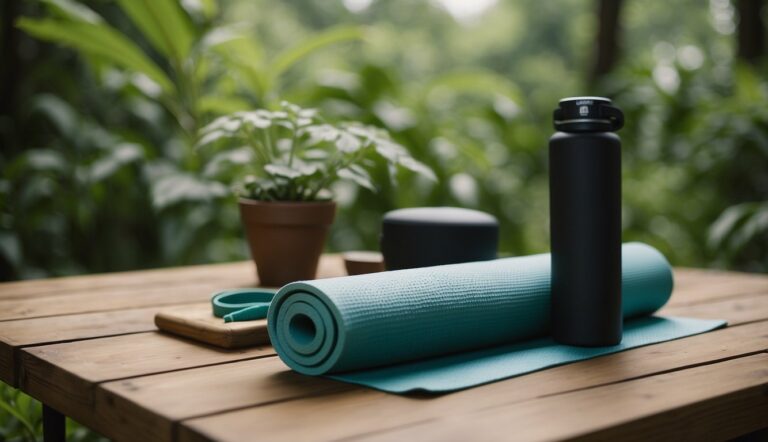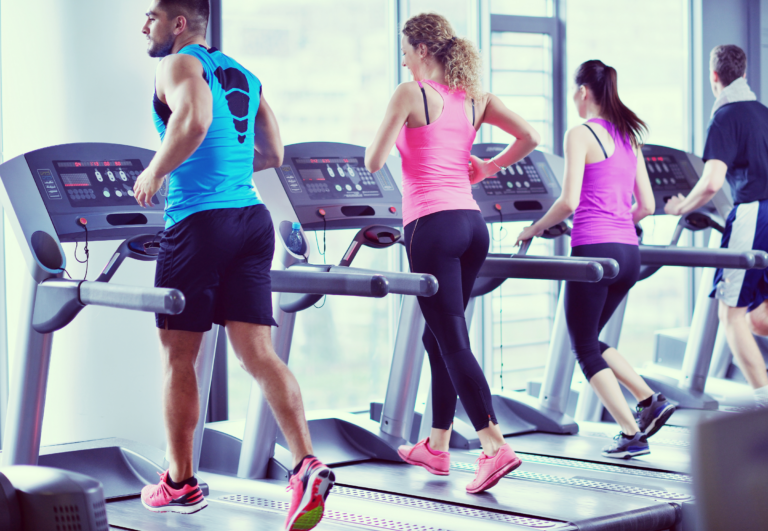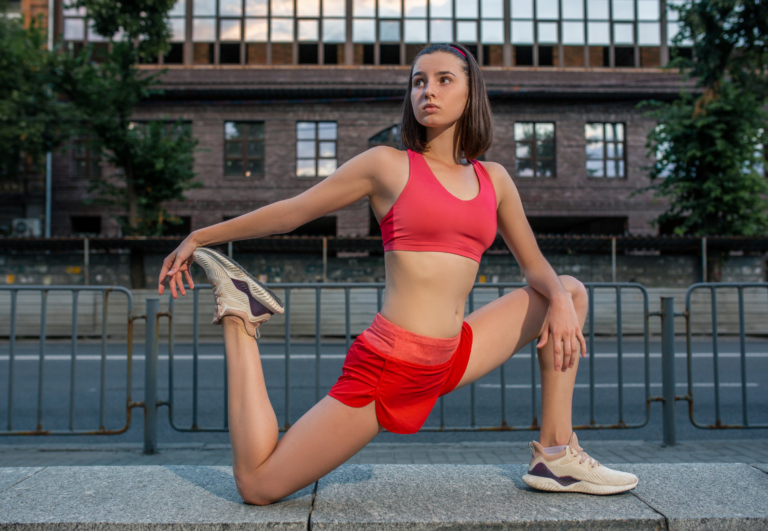Dynamic vs. Static Stretching for Runners: Benefits and When to Use Each Method
When it comes to running, how you stretch can be as important as the workout itself.
Dynamic stretching, which involves active movements that stretch your muscles without holding the position, prepares your body for the physical exertion of running. It warms up the muscles, elevating your heart rate and activating the muscle groups you’ll use during your run.
On the other hand, static stretching entails extending your muscles to the point of tension and holding the position for a certain period, usually between 30 to 90 seconds. While this type of stretching can be beneficial post-run for cooling down, it’s especially useful for increasing flexibility and aiding in recovery on your days off.
Incorporating both dynamic and static stretches into your running routine is vital for improving performance and recovery. Pre-run, focus on dynamic stretches to prepare your muscles for the activity ahead. After your run, wind down with static stretches to help your muscles recover and prevent stiffness.
This balanced approach ensures you get the most out of your workouts and stay injury-free.
The Difference Between Dynamic and Static Stretching for Runners
When preparing your muscles for a run, understanding the distinctive benefits of dynamic and static stretching is crucial for enhancing performance and reducing injury risk.
Dynamic Stretching Explained
Dynamic stretches invigorate your muscles by increasing blood flow and elevating muscle temperature. These stretches are movements that activate your muscles and joints, mimicking the activity you are about to perform. For example, leg swings and arm circles are dynamic stretches that can boost your range of motion and enhance nervous system activation, preparing you for running with improved flexibility and strength.

Key Points for Dynamic Stretching:
- Increases Muscle Temperature: Prepares your muscles by warming them up
- Improves Range of Motion: Enhances flexibility in the muscles and joints
- Activates the Nervous System: Prepares your body for the demands of exercise
| Dynamic Stretch | Benefit for Runners |
|---|---|
| Leg Swings | Targets hips and enhances range of motion. |
| Arm Circles | Warms up shoulders, essential for arm movement while running. |
Static Stretching Explained
Static stretches involve holding a position for a certain period of time – usually between 30 to 90 seconds – to lengthen and relax your muscles, ligaments, and other soft tissues. This type of stretching is best performed post-run, as it helps enhance overall flexibility without compromising muscle explosiveness. Holding a stretch like a seated hamstring stretch allows your muscles time to relax and can aid in recovery after your muscles have been taxed from running.

Key Points for Static Stretching:
- Enhances Flexibility: Helps to maintain and increase muscle length
- Aids Recovery: Assists in reducing muscle soreness and facilitating recovery
- Relaxes Muscles: Calms the nervous system after vigorous activity
| Static Stretch | Benefit for Runners |
|---|---|
| Seated Hamstring Stretch | Promotes relaxation and flexibility in the back of the legs. |
| Quadriceps Stretch | Stretches the front thigh muscles, crucial for knee health. |
Benefits of Stretching for Runners
As a runner, incorporating both dynamic and static stretching into your routine can elevate your performance, aid in injury prevention, and assist with recovery post-workout.
Enhancing Performance and Mobility
Dynamic Stretching: This type of stretching, performed before running, primes your body for the activity ahead. It involves actively moving muscle groups through their full range of motion, increasing blood flow, enhancing agility, and improving running economy. For example, leg swings and lunge walks are dynamic stretches that target key muscle groups used in running.
- Key Benefits:
- Boosts muscle power
- Enhances mobility for better performance
- Prepares muscles and joints for running
Static Stretching: Best performed after running during the cool down, static stretching involves holding a stretch for 30-60 seconds. This helps in lengthening the muscles, improving flexibility, and reducing post-running soreness.
- Key Benefits:
- Aids in post-workout recovery
- Improves overall flexibility
- Helps maintain muscle balance
Dynamic Stretching for Injury Prevention
Starting your warm-up routine with dynamic stretches can help prevent common running injuries. By improving the range of motion and preparing the muscles for the impact of running, the likelihood of strains and sprains is reduced.
Static Stretching for Recovery
Following a run, static stretching can facilitate recovery by alleviating muscle tension and promoting blood flow. Consistent post-workout stretching can contribute to resolving muscle imbalances that often lead to injuries.
By regularly including both dynamic before running and static after, you not only work towards achieving better performance but also establish a foundation for a healthier, more resilient running practice.
Incorporating Stretching into Running Routines
Integrating the right type of stretching at the correct time is critical for enhancing your running performance and minimizing injury risk. Dynamic stretches prime your muscles for the workout ahead, while static stretches aid in recovery post-run.
Dynamic Stretches as Warm-Up
Before you start your run, focus on dynamic stretching to prepare your body for the exercise. These stretches involve controlled movement to improve circulation and increase the range of motion. Some effective pre-workout dynamic stretches include:
- Walking Lunge: Enhances hip flexibility and engages your core.
- Leg Swing: Loosens the hamstrings and activates the leg muscles.
- Hip Circles: Opens up the hip joint and improves mobility.
These exercises should mimic the actions of running, preparing your muscles for the workout by increasing blood flow and power output.
Static Stretches for Cool Down
After completing your run, static stretches serve as an excellent cool down to help your muscles recover. Engage in stretches that target major running muscles, holding each for about 15-30 seconds:
- Hamstring Stretch: Reduces tension in the back of your thighs.
- Quad Stretch: Aids in relaxing the front thigh muscles.
- Butterfly Stretch: Helps stretch your inner thighs and groin.
- Calf Stretch: Essential for preventing calf tightness and improving flexibility.
- Seated Hamstring Stretch: Further alleviates tightness in the hamstring after your workout.
Remember that the goal is to gently lengthen the muscles and aid in recovery, not to increase flexibility, which is better suited for separate training sessions.
Best Practices for Stretching Techniques

To enhance your running performance and prevent injuries, it’s essential to incorporate both dynamic and static stretching into your routine with attention to form and timing.
Executing Stretches with Proper Form
When you perform dynamic stretches like leg swings, arm circles, and torso twists, ensure you’re moving through the complete range of motion of joints such as the hips, shoulders, and spine. Keep your movements controlled and smooth to effectively increase muscle temperature and blood flow, which can contribute to better agility and speed.
Dynamic Stretching Examples:
- Leg Swings: Stand on one leg, swing the other leg forward and backward to stretch the hamstrings and hip flexors.
- Arm Circles: Extend your arms and make large, slow circles to warm up the shoulder joints.
- Torso Twists: With feet planted, twist your upper body from side to side to loosen the spine.
Timing and Frequency of Stretching
Pre-workout, incorporate dynamic stretching to prepare your muscles and joints for the activity. Aim for a brief 5 to 10-minute session to elevate your heart rate and warm up your body. Post-workout, use static stretching to target muscles like the hip flexor, hamstrings, and shoulders for a deeper stretch aiding in recovery.
Stretching Frequency:
- Pre-Workout: Dynamic stretching, 5-10 minutes as part of warm-up routine.
- Post-Workout: Static stretching, hold each stretch for 15-30 seconds, part of the cool-down for recovery.
Engaging in regular stretching can improve flexibility, reduce the risk of injury, and support general fitness.






